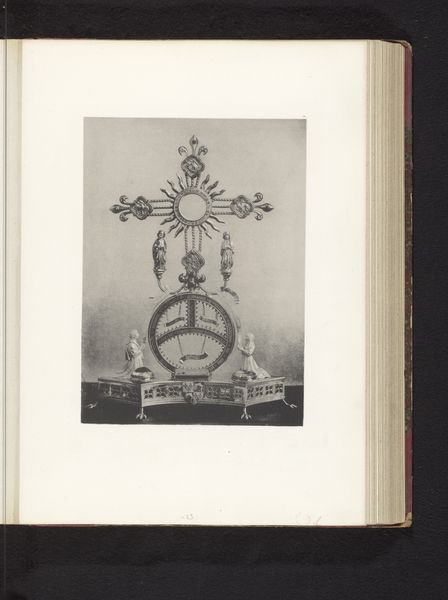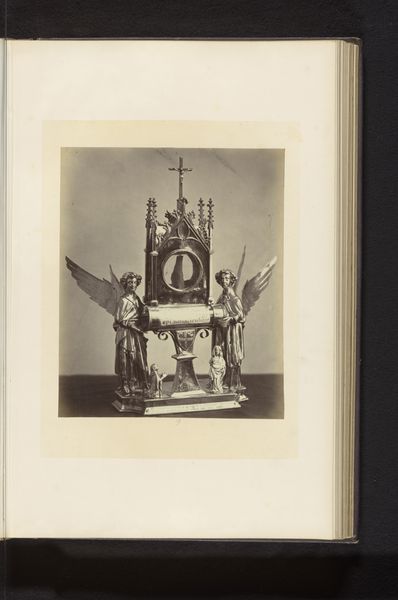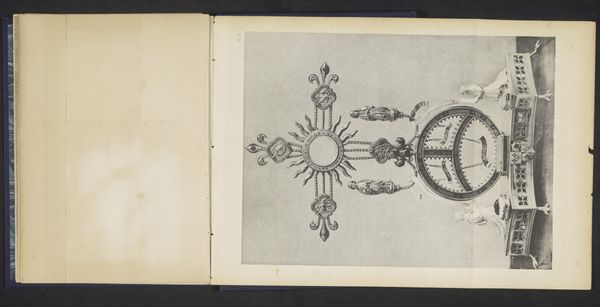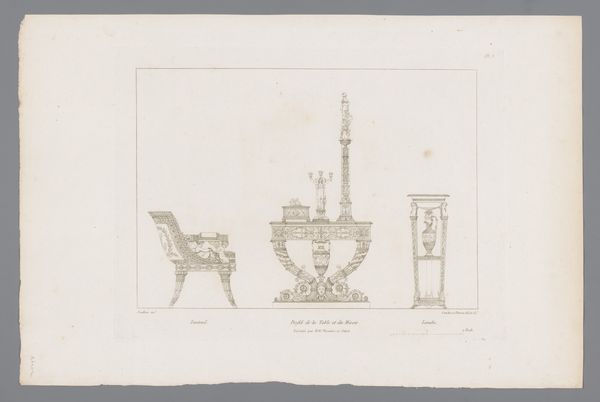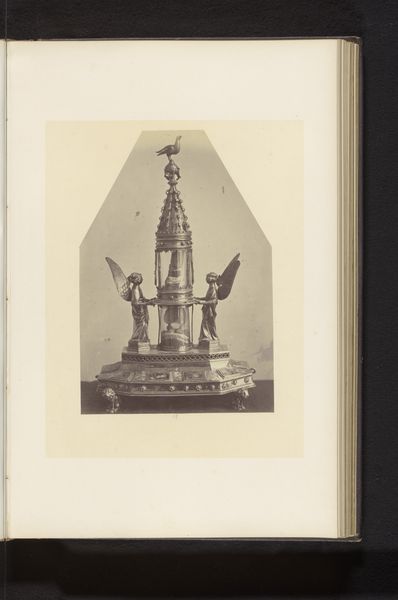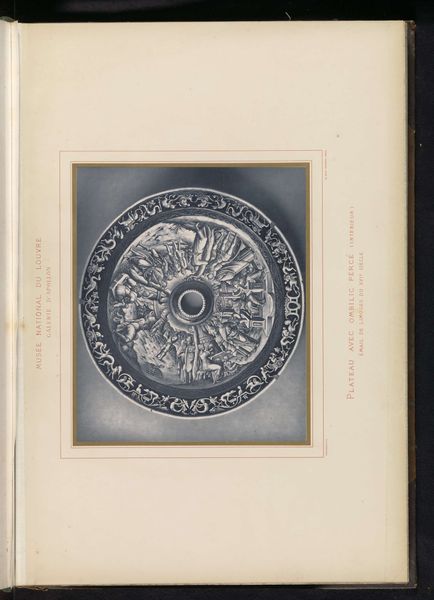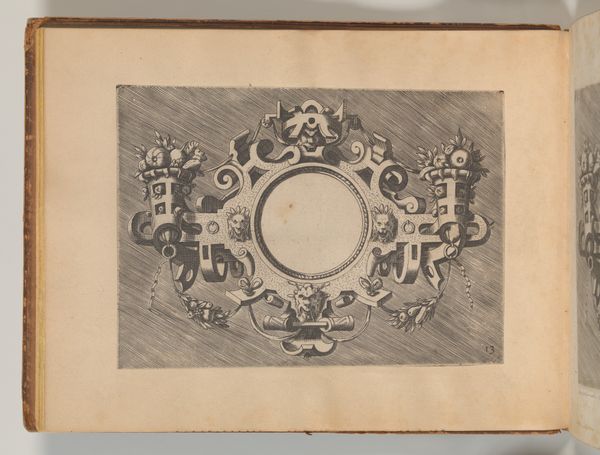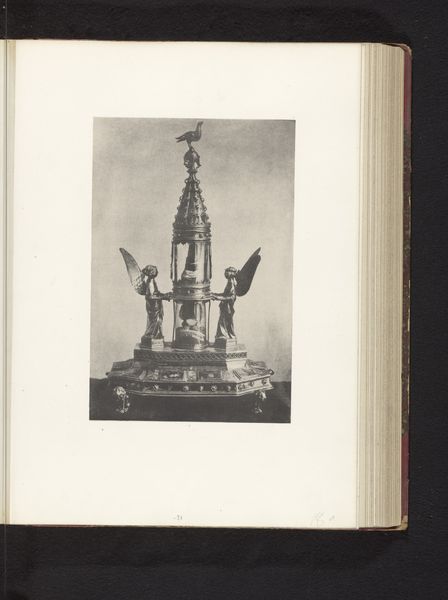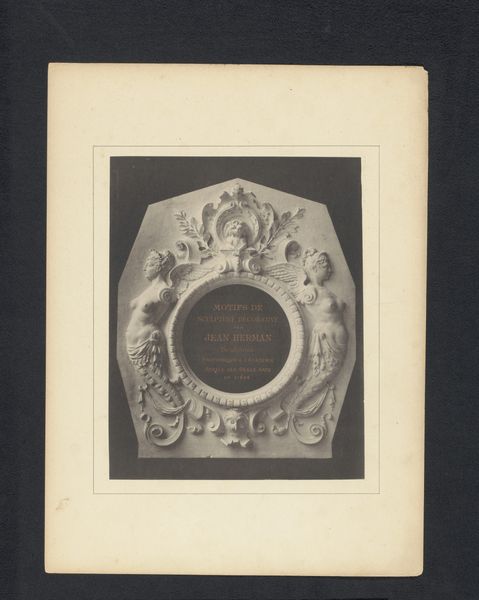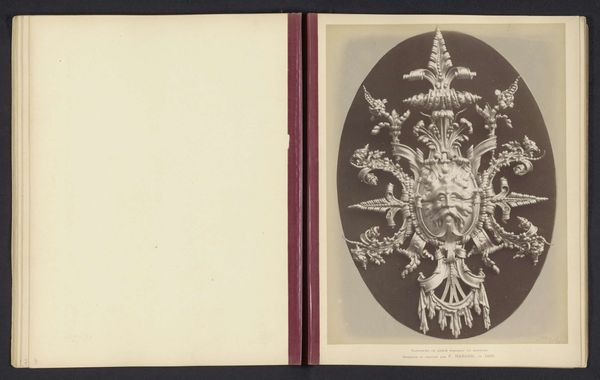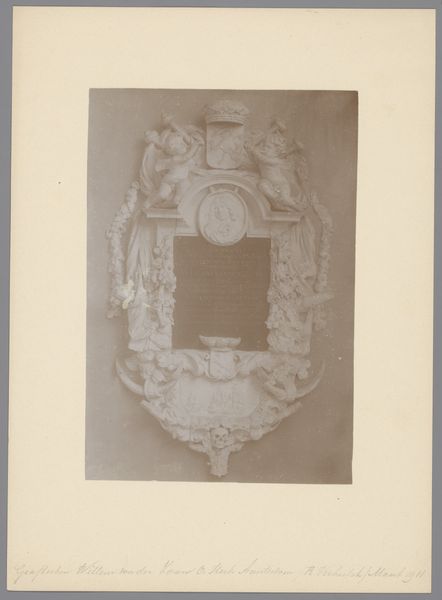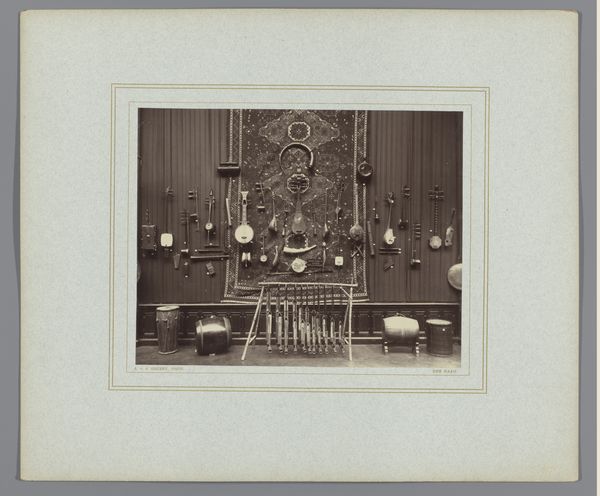
Monstrans uit de Sint-Martinusbasiliek in Halle, opgesteld op een tentoonstelling over religieuze objecten uit de middeleeuwen en renaissance in 1864 in Mechelen 1864
0:00
0:00
photography, gelatin-silver-print
#
photography
#
gelatin-silver-print
Dimensions: height 259 mm, width 198 mm
Copyright: Rijks Museum: Open Domain
Curator: It's a quiet drama, isn't it? Somber. The greys, almost monochromatic, evoke a sense of the past – like looking through a dusty window into another time. Editor: Precisely! What you're seeing is a gelatin-silver print taken in 1864 by Joseph Maes. The image captures a monstrance from the Basilica of Saint Martin in Halle. It was on display at an exhibition of medieval and Renaissance religious objects in Mechelen. Curator: "Monstrance," such a formidable word! And this particular one, nestled amongst those exhibition items... there’s a performative aspect to it all, a double-layer of display and reverence. That cross radiating outwards… Editor: Radiating, exactly! Think about the symbolism. The sunburst surrounding the central space for the Eucharist represents Christ as the light of the world. It's a potent image, central to Catholic ritual. Curator: The light... yes. But it feels like captured light. A contained power, mediated through this ornate cage of precious metal and careful composition. The two figures kneeling feel... small. Editor: That is part of the monstrance's inherent power. To me, those small, kneeling figures flanking the centerpiece act almost as guarantors, underscoring the weight of devotion contained in this meticulously constructed vessel. The photographer masterfully framed these elements in relation to one another. Curator: You are spot on. It seems Maes captured the visual paradoxes wonderfully: humility and power, devotion and artifice... All very 1864, isn't it? Editor: Indeed. I'd only add that an artwork like this speaks to cultural memory. Long after the exhibition closed, it persists as a study of devotion itself, mediated by artistry, religion, and the then-new technology of photography.
Comments
No comments
Be the first to comment and join the conversation on the ultimate creative platform.
